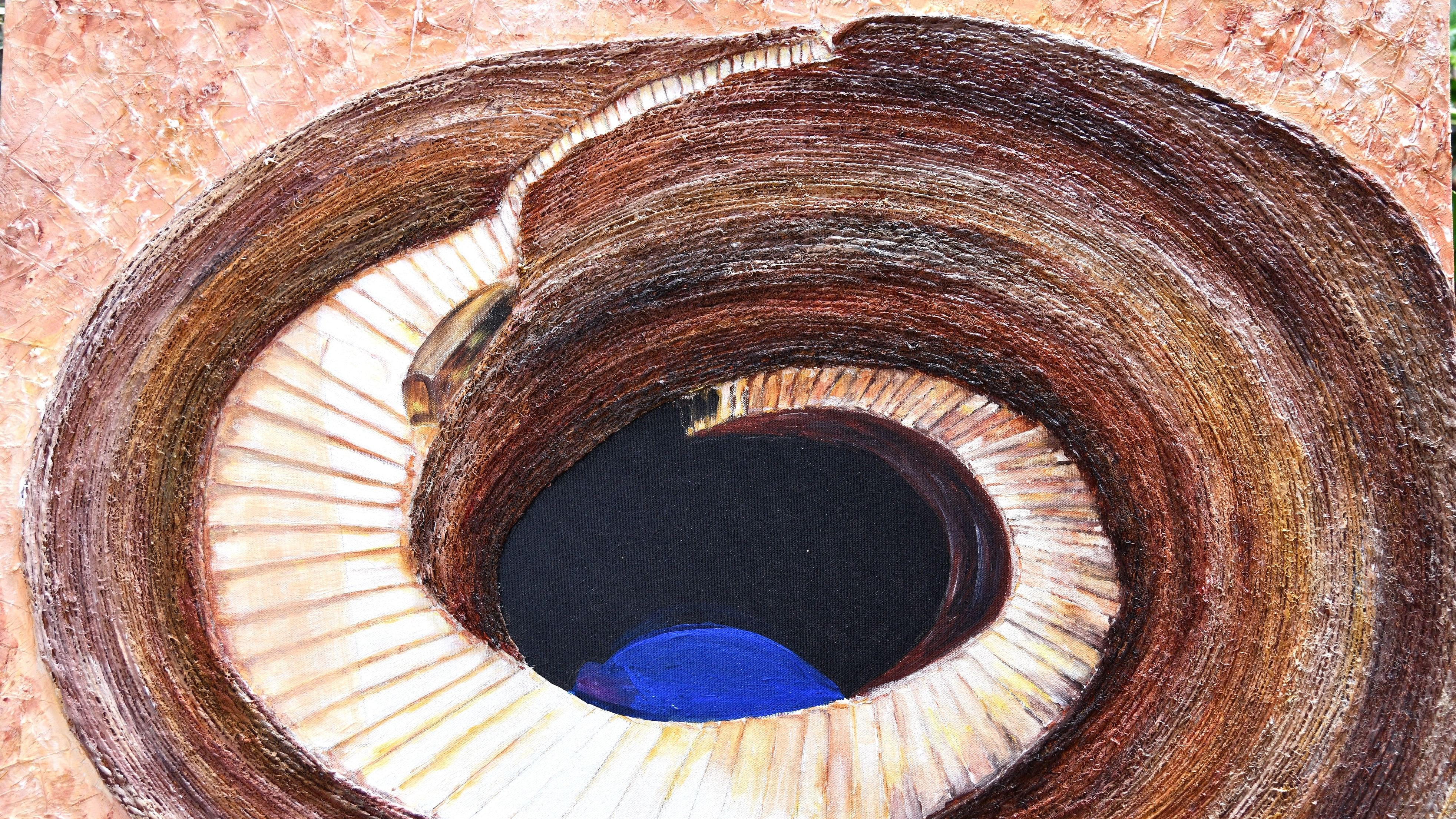
Water management, conservation strategies and access to clean drinking water are burning topics today. In such a scenario, Rashmi Ghosh’s solo exhibition at Monalisa Kalagram in Pune, which delves into stepwells of India, assumes greater import. The exhibition, Mapping Stepwells: A Visual Narrative, focuses on stepwells as significant sites of architectural heritage that formed a rich water resource for local communities in ancient times.
Ghosh presents photographs of several stepwells and mixed media works, along with extensive text that documents her journey to discover stepwells located in different parts of the country. As is widely known, stepwells are peculiar to the Indian sub-continent and located primarily in arid regions, where water tends to be scarce. These subterranean water reservoirs, found in large numbers in the western parts of India, are known as vavs or baoris/baolis in local dialects. They are characterised by steps leading to the water, thus ensuring access to groundwater throughout the year.
Ghosh, a former chartered accountant with over two decades of experience in teaching finance, developed a deep interest in stepwells, albeit by chance. A few years ago, she visited Hampi. The water reservoirs here, called ‘Pushkaranis’, are splendid examples of the Vijayanagara style of architecture. Awestruck by their structural design, engineering and ornamentation combined with their functional aspects, and the fact that these were conceived and constructed several centuries ago, Ghosh began researching stepwells in extensive detail. It was impressive that water conservation and access were thought about in such great detail for centuries, she says. She has since visited numerous stepwells so far, located in Maharashtra, Gujarat, Rajasthan, Delhi, Karnataka and Andhra Pradesh.
Her documentation journey has involved visits to some of the most popular stepwells such as the Rani ki Vav in Patan, the Sun Temple at Modhera, Adalaj near Ahmedabad, Toorji ki Jhalra in Jodhpur and Chand Baori in Abhaneri, all of which are well-known tourist destinations and have undergone extensive conservation and restoration. For instance, the Rani-ki-Vav stepwell at Patan, Gujarat, is listed as a Unesco heritage site. Built in the 11th century, it is a fine example of the Maru-Gurjara architectural style.
Such architectural brilliance is found elsewhere too. However, there are thousands of other stepwells that are little known and are in a state of disrepair, with little information available about their origins. Many of these have unfortunately become dumping grounds, several are no longer accessible while others lie in ruins. Ghosh visited several of these lesser-known stepwells too, a few of which were in a terrible state.
In general, each stepwell is unique to the region, with specific structural design and geometric patterns, based on the period of construction with the designs and motifs reflecting Hindu, Islamic and Indo-Islamic influences. Ghosh traces her journey while mapping these various stepwells across regions, while additionally chronicling their state of neglect. She has also begun compiling stories and folklore from the local communities, some of which have been presented as text narratives in the exhibition.
Photographs from various stepwells, a video based on aerial footage of stepwells in and around Pune, and charcoal drawings of architectural sections which depict the iconography and motifs at the stepwells, along with text panels, form a large part of the exhibition. In addition, mixed media works are presented to depict their geometrical and structural designs.
One hopes that this body of work draws attention to water conservation and creates awareness about the restoration of stepwells, which are sorely in need of preservation. The exhibition is from June 21-30 at Monalisa Kalagram, Pune.
Disclosure: The exhibition has been curated by this author.
Dab Hand is your artworld lowdown.
The author is a Bengaluru-based art consultant, curator and writer. She blogs at Art Scene India.